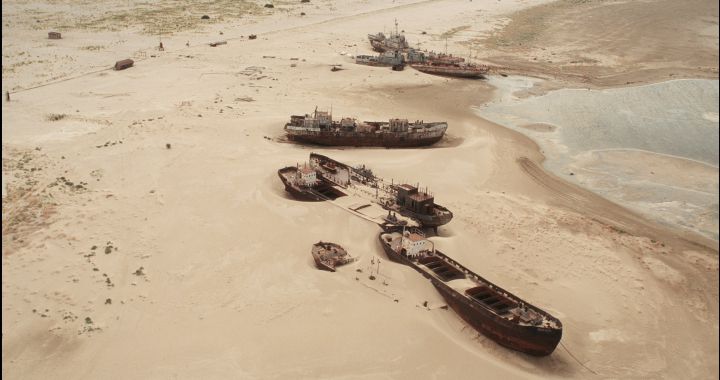The United States has nearly 10 million square kilometers, about twenty times more than Spain. A gigantic expanse that seemed incomprehensible when, throughout the 19th century, settlers of European origin gradually extended westward, in a fiery conquest that would later inspire hundreds of films. These lands were an opportunity for enrichment to which thousands of pioneers succumbed, who gradually advanced towards the Pacific at the expense of the Native Americans who originally inhabited the region. Each new territory was a real mine to explode. The resources seemed endless.
But everything has a limit. In 1973, two of the most prestigious scientific organizations in the United States, the National Academy of Sciences and the National Academy of Engineering, produced a joint report in which they assessed the dramatic consequences of mining in the western coal belt of the country. His diagnosis was correct: tens of thousands of square kilometers had suffered Irreparable damage. They had become wastelands. Therefore, they have been officially declared “National Sacrifice Areas”.
It was the first time that a term was used which, half a century later, is used to designate many other regions of the planet that have suffered the same fate. Places where the air is unbreathable, the water is poisonous and almost no life springs from the earth. Places where life is a challenge both for human beings and for all kinds of animal and plant species. dead places whose existence is nevertheless essential to the maintenance of the way of life of the other places.
From north to south, from east to west
Although there are sacrificed areas in almost the entire world, what is called the global South bears the brunt of this: the peripheral countries of Africa, Asia or Latin America They are traditionally the ones who have seen logging areas multiply within their borders.
The examples number in the dozens. He Aral Sea, in Uzbekistan, it was reduced to less than 10% of its original size after systematic transfers of water by the Soviet Union in the 1960s. In Accra, the capital of Ghana, the gigantic landfill of Agbogbloshie receives electronic waste from the richest countries, in a place as toxic as it is dark, where thousands of people burn plastic to extract the most precious minerals. In Between rivers (Argentina), more than 135,000 hectares of what was once one of the most lush forests in the country was the source of uncontrolled deforestation that occurred in just ten years, between 2007 and 2017. And in the Niger River Delta, In southern Nigeria, oil exploration has caused more than 6,800 oil spills, making it one of the most polluted areas in the world.
And in Spain? Experts agree that our country also has sacrificed areas. In fact, the term was put on the table after the successive environmental disasters that occurred in the Murcia Mar Menor. There, fertilizers used in nearby crops end up in the water, causing a lack of oxygen that has claimed the lives of thousands of fish. In Nerva (Huelva), a huge landfill receives hazardous waste from all over the world, which has put the neighbors on a war footing. And in provinces like Zamora, the installation of macro wind projects has created a landscape that environmentalists say has led to a serious loss of biodiversity.
The existence of sacrificed zones is the direct consequence of a way of apprehending the world: extractivism. A production model which, as a consequence of the economic system, always tends towards infinite growth. But there is a problem: the planet’s resources are limited. And the damage caused by the exploitation of the territory, as occurs in the sacrificed areas, often irreversible. For this reason, more and more voices advocate a 180 degree turn in our relationship to the planet that places the lives of those who inhabit it at the center.

